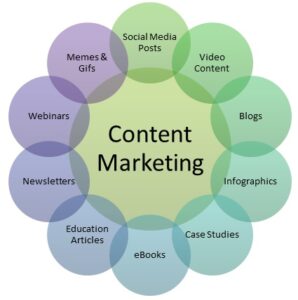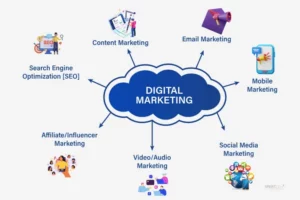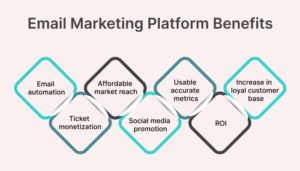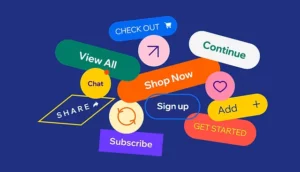
Welcome to the realm of passive income potential! If you’ve ever dreamt of turning your passion into profit or seeking the freedom of online entrepreneurship, mastering the art of building a high-converting affiliate website is your ticket to success.
Affiliate marketing is now a popular path to generate income online. A website is essential to the success of an affiliate business as it provides a centralised platform for building credibility, engaging with your audience, optimising for conversions, and leveraging various marketing channels to drive affiliate sales.
A high-converting website or blog is therefore undoubtedly one of the foundational pillars of affiliate marketing.
What is a high-converting affiliate marketing website?

Think about it this way: A meticulously crafted website is one that does not only attract visitors, but also effortlessly guide them towards making purchases, all while you earn commissions.
But how does one transform a mere website into a revenue-generating powerhouse? How do a website contribute into converting visitors into paying customers?
The answer to these questions lies in crafting a strategy embraces fundamentals of building an affiliate website, creativity, intertwining user experience with persuasion, adherence to SEO basics for websites and creativity so that every click has the potential to turn into a conversion. Get ready to unlock the secrets to building an affiliate website that not only thrives but dominates in the competitive online landscape.
Building a high-converting affiliate website involves several key intertwined steps. In addition, you must consistently deliver value to your audience to ensure you maintain a high-converting status for your affiliate website that generates sustainable income over time.
Choosing a Niche
I’m going to kick things off by diving into why choosing the right niche is critical for your affiliate marketing triumph. You might be wondering; What’s all the fuss about niches anyway?
Choosing the right niche is a critical decision that can significantly impact the success (or failure) of your affiliate business. A well-chosen niche isn’t just decisive—it’s the cornerstone for building a website that converts. It narrows down your audience to a specific group, which makes all the difference when developing targeted content that hits home.

Choosing a niche should resonate with you personally. Why? Because when you’re passionate about a topic, it shows. Your excitement becomes contagious, and guess what? Your audience feels it.
Plus, being interested in your own niche means you’re likely to put in the time and energy required to create something remarkable. On top of that, you’ve got to assess the market demand because, at the end of the day, your niche needs to be profitable.
Here’s where things get practical. When evaluating potential niches, ask yourself a few important questions:
- Is there a good balance between interest and competition?
- Are people searching for it online?
- Are the searchers buying related products?
- How about profitability?
- Whats the possible lifetime of your content?
This isn’t just about picking a niche you love; it’s also about making sure others love it enough to spend money. Reflection on these aspects of niche selection is paramount in targeting an audience that actively seeks what you’re talking about and, more importantly, what you’ll be selling.
Take note: the niche you choose sets the stage for your entire affiliate marketing strategy—from the content you create to the affiliate programs you’ll soon be exploring. So, in my opinion, take your time with this first step. It’s the foundation that your affiliate website will stand on, and you want it to be rock solid.
Sifting Through Affiliate Programs: A Research Masterclass
So you’ve chosen your niche, and you’re ready to find the affiliate programs that are the bread and butter of your website. But hold up! This isn’t just about signing up for the first program you find. It’s about being strategic, because the right programs can make or break your affiliate business.

Initiating your search with the big-league players like Amazon Associates or Commission Junction may be the natural direction to take, but there’s more to it than just that.
Amazon Associates is highly competitive, with millions of affiliates promoting products on the platform. Beginners may struggle to stand out in such a crowded market, especially without a well-established audience or marketing strategy. They also have lower commission rates and short cookie durations.
Truth be told: There are so many affiliate programs in the online market-space to choose from. When choosing an affiliate program, consider factors such as your niche, commission rates, cookie durations, product relevance to your audience, affiliate support and resources, payment methods, and the overall reputation of the affiliate network or program.
It’s also essential to read the terms and conditions carefully and ensure compliance with affiliate marketing policies to avoid any issues down the line.
Look for programs with reasonable commission rates that fit your niche perfectly. And remember, high-ticket items might offer larger commissions, but conversions can be fewer.
I give you two examples to demonstrate this.
#1. Bluehost Affiliate Program

Bluehost Affiliate Program, a leading provider of website builder, domain registrar and web hosting services, is one of the most generous program. Commission ranges from $65 – $125 per sale. You will earn at least 70% of each qualified sale, capping at $100 per sale. By any standards, this can translate into huge commission depending on the number of sales.
#2. Wealthy Affiliate Program
Wealthy Affiliate is an affiliate marketing platform that offers training, tools, and resources to help individuals build successful online businesses, in addition to its own affiliate Program. You subscribe this program to learn how to be a successful affiliate, a perfect starting point for beginners.
Commissions for Premium Members starts at $20.00 for the first month $49.00 special offer, then $23.50 thereafter. Starter Members earn $10.00 for special offer referrals, then $11.75 monthly and $117.50 yearly commissions.

Cookie duration is another big player. This refers to how long the cookie stays on the prospective buyer’s system after they click your link. Longer durations increase your chances of earning a commission, even if they buy weeks later.
There’s also the issue of quality and reliability of the product or service being offered – your reputation is on the line. Check out the affiliate program’s track record and read what other affiliates have to say about their experiences. A program with solid support will give you resources like banners, ad copy, and even strategy advice.
And don’t ignore the fine print. Payment thresholds and methods need to work for you, not just the program. When you’ve got a list of potential affiliate programs that tick all these boxes, it’s time to start thinking about setting up your digital storefront.
Here’s a guide on ‘How to Choose an Affiliate Program‘
Laying the Digital Foundation: Setting Up a Conversion-Ready Website
Let’s now walk through the nuts and bolts of creating a website that’s not just attractive, but a conversion machine. That’s going to include polishing every detail, from picking a domain to ensuring your site’s layout maximizes user engagement.
First off, you’ll want to choose a hosting service that’s reliable and has a track record of good performance. Don’t worry too much about the technicalities here; many providers cater to non-techies with user-friendly interfaces.

Bluehost fit this billing. As they say, there’s a reason why WordPress Recommend Bluehost
Next, picking a domain name isn’t just about the catchiness; it’s about relevance and ease of recall. Choose something that resonates with you and speaks directly to the niche you’re diving into. Your domain name should tell a story in a snippet.
Now, designing your website is where you can really shine. It’s not just a canvas; it’s your storefront. A clean, intuitive design not only keeps visitors around but also nudges them towards your affiliate links.
Incorporate crucial features like mobile responsiveness and fast loading times. You can always adjust your approach down the road, but these fundamentals are key to not losing visitors right off the bat.
Lastly, don’t overlook the power of plugins. They can equip your website with necessary e-commerce capabilities, improve SEO, and even help manage affiliate links. This includes companies that offer powerful tools for growing your online presence: think WordPress, AWeber, and Google Analytics.
How to Build a Website from Scratch for Affiliate Business
Crafting Content That Clicks: Driving Engagement Through Quality
You’ve got the foundation set; your affiliate website or blog is up and ready. Now, it’s critical to fill it with content that resonates with your audience. This isn’t just about producing a lot of content; it’s about quality.
I want to underline the weight that high-quality, valuable content holds in your affiliate journey. It’s the lifeblood of your site. By delivering information that solves problems or addresses the needs of your readers, you establish trust and authority, paving the way for successful affiliate marketing.
The art of content marketing is about establishing expertise, authority, trustworthiness so as to promote brand awareness, and improves sales (otherwise known as E-E-A-T – Experience, Expertise, Authoritativeness, Trustworthiness). To achieve this, there are various channels that comes into mind:

When it comes to drumming up engaging content ideas, think like your audience. What questions might they have? Which problems could they be trying to solve?
Use these inquiries as a springboard for your articles, reviews, and tutorials. Remember, your content should be a gateway that not only draws readers in but also seamlessly leads them to your affiliate products.
Including personal narratives or storytelling elements can significantly enhance the connection with your audience. If you’ve used the products or services yourself, share your genuine experiences.
That kind of transparency builds trust and can influence purchasing decisions more effectively than mere product specifications.
Google has come up with guidelines of writing content that not only ranks but also is helpful to your audience.
Google’s Helpful Content Guidelines
Beginners Guide to Creating a Blog Content Strategy
Maintaining a balance between promotional content and genuinely informative material is crucial to not alienate your readers. When you strike that perfect chord where you provide so much value that when you do recommend a product, your readers are willing to take your word for it.
Your first few pieces of content won’t be perfect, and that’s okay. The key is to start and then refine as you go. You can always adjust your approach based on feedback and performance metrics. Just don’t focus too much on perfection that you never publish anything. Done is better than perfect is a fitting mantra here.
SEO Hacks for Affiliate Marketers: Climbing the SERP Ladder
After shaping your content to resonate with your audience, your next move is to make sure it’s seen. You’re going to learn SEO strategies tailored for affiliate marketers that can help catapult your website to the top of search engine results.
First, let’s demystify SEO for affiliate marketing. It’s about understanding what your potential customers are searching for and making sure your website speaks their language (The Search Intent). This involves researching keywords that are relevant not just for high search volumes, but for intent. Users ready to buy or seeking reviews will use very specific phrases, and those are gold for your content.
On-page SEO is your bread and butter. This includes optimizing your title tags, meta descriptions, and content to incorporate those valuable keywords. Keep it natural, though; search engines are savvy to keyword stuffing. Also, don’t forget about the structure of your content. Use headings effectively to make it easy for both readers and search engines to grasp what your page is about.
Off-page SEO matters as well. Building a network of backlinks from reputable sites is a stamp of approval in the eyes of Google and others. Approach this by guest posting, collaborating with influencers, or producing content so excellent that others can’t help but link to it.
Finally, you want to stay on top of SEO trends and Google’s algorithm updates. The digital landscape changes quickly, and staying informed is key to maintaining your rankings.
Smart Promotion: Affiliate Product Strategies that Convert
How you promote these products within your SEO-rich content will have a big impact on your conversion rates. Showcasing your affiliate products effectively will greatly contribute to achieving actual conversions. But remember, it’s not just about splashing product links across your site; it’s about a strategic placement that aligns with your content and your reader’s needs.

It’s important to identify the right mix of products—those that speak directly to your audience’s interests and pain points. You must strive to weave in affiliate products within your content organically. This way, you maintain your site’s credibility while pointing your audience toward products that could genuinely help them.
Now, the secret sauce? Content integration. When you write a post that solves a problem or addresses a need, inserting an affiliate product as part of the solution can come off as helpful rather than pushy. It’s about adding value, and when your recommended products do just that, your audience is much more likely to take the plunge.
In my opinion, it’s crucial to keep a close eye on analytics. Knowing which products resonate with your audience and why they perform well (or don’t) is essential for tweaking your strategies. Look for patterns in click-through rates, time spent on pages, and conversion data. This information is gold dust for refining your approach over time.
Next, you must endeavour to promote with authenticity and transparency—disclose your affiliate relationships upfront. Trust is a two-way street, and your audience is smart. Full disclosure not only abides by regulations, but it also fosters trust.
Your Audience’s Inbox Advantage: Leveraging Email for Affiliate Growth

Your audience’s inbox is a prime real estate for affiliate marketing. One of the most powerful tools in an affiliate marketer’s arsenal is their email list.
It’s a direct line to your audience, and if used wisely, can become your most consistent source of traffic and sales.
To start building your list, you need something valuable to offer in exchange for your audience’s contact information. Think of an ebook, a course, or an exclusive set of tips related to your niche. This is your opt-in incentive, and it has to resonate with your audience’s needs and interests.
Now, once you have a growing email list, the way you engage with them is crucial. You’re going to want to focus on nurturing these relationships. Share insights, helpful tips, and personal stories to build trust. Remember, every email is an opportunity to add value and subtly steer your audience toward your affiliate products.
You can’t just send out any email and expect conversions. You should always craft campaigns that feel personal and attentive to your audience’s desires and pain points. Segmentation lets you tailor your message, so whether your subscribers are newcomers or long-time followers, they get content that speaks directly to them.
Fortunately, the advent of email marketing platforms has made it efficient to engage your audience through emails through automation. As a result, you will leap numerous benefits as follows:

Some of the leading email marketing platforms include:
- Brevo — Best for growing small businesses.
- HubSpot — Best for enterprise.
- Mailchimp — Best for simple emailing.
- ConvertKit — Best for content creators.
- MailerLite — Best customer support.
- Klaviyo — Best for customizable automation.
- AWeber — Best for bloggers.
Finally, understanding how to analyze the performance of your email campaigns is key. Open rates, click-through rates, and conversions from your emails will tell you what’s working and what isn’t. This data will guide you to make informed decisions and tweak your approach for better results.
Action Incitement: Mastering the Art of Compelling CTAs

You’ve got your readers hooked with quality content, and now you’re going to find out about turning that interest into actions.
CTAs, or call-to-actions, are your best friends in the game of conversion. They’re not just buttons or links; think of them as the grand finale to your content’s performance.
CTAs are the gateway between content appreciation and conversion success. You can always adjust your approach down the road, but let’s start by understanding the psychology that makes a visitor click.
It’s about clear messaging, urgency, and relevance. Choose something that resonates with your audience and makes them feel like they’re in the right place.
Designing your CTAs isn’t a one-size-fits-all. It’s a process of experimentation and refinement. We are talking of practical design tips such contrasting colours, action-oriented language, and strategic placement that doesn’t disrupt user experience.
Here’s where the rubber meets the road – testing. A/B testing, to be precise, allows you to compare different versions of your CTAs to see which one performs best. Don’t worry too much about getting it perfect the first time; your first attempt doesn’t need to be your last.
The impact of well-crafted CTAs can significantly increase your click-through rates. So, this isn’t just about creating a pretty button; it’s about creating a journey for your audience that ends in a conversion.
Turning Insights into Income: Crafting Your Conversion Success Story

Achieving a high-converting affiliate website is not just about choosing the right niche or finding the optimal affiliate programs – although those are pivotal steps.
It’s about stitching together a strategy that encompasses great content, smart SEO practices, strategic promotions, and effective email campaigns, all designed with your user in mind.
Remember, your website is a living entity on the web. It thrives on the content you produce, the optimizations you make, and the relationships you build with your audience.
Continually refine your approach, keep abreast of the latest trends, and always seek to provide value.Adjust, test, learn, and grow – these are your new mantras. With comprehensive tracking and analysis, you won’t just guess what works, you’ll know. Use these insights to tailor your website’s experience, enhance your content, and ultimately, increase your affiliate income.
Parting Shot…
As we conclude our exploration into the art of building a high-converting affiliate website, remember this: success lies not just in the technology or tactics, but in the passion you infuse into your content, the empathy you show towards your audience, and the dedication you invest in refining your strategies. Whether you’re a seasoned marketer or just starting out, the journey to affiliate success is an ongoing one, filled with learning, adaptation, and growth.
So, embrace the challenges, celebrate the victories, and never stop striving for excellence. Your affiliate empire awaits, ready to be built one click at a time. Now, go forth and conquer the digital landscape with your high-converting affiliate website!
Jeff
Safari Affiliate
